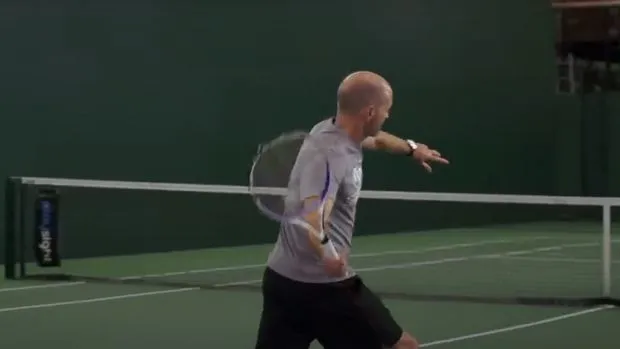Each type of tennis court has distinct characteristics that impact the style of play and can give players an edge in specific types of tournaments. In this post, I’ll discuss what each type of court is made up of, along with their advantages and disadvantages, so that you better understand which surface is right for your level of play.
Grass Court
Grass is usually seen as the fastest surface in tennis because it offers very little resistance and does not absorb shocks well, which can be a problem if your technique isn’t up to par.
It is also softer than other surfaces, so it can be difficult on joints if you don’t wear appropriate footwear when playing on it. The Wimbledon Championships is one of the few remaining tournaments still played on grass each year.
Despite these challenges, many players enjoy the unique playing experience of grass courts. The game’s speed can be thrilling, and the low bounces can create surprising shots.
Clay Court
Clay courts are known for having a special type of surface that absorbs much more shock than harder surfaces. This makes clay courts slower and more suited for players who rely on spin to win points. It also requires more energy and effort from players due to the extra resistance from the surface. One of the most famous clay court tournaments is the French Open, which has been held on clay since 1891.
The court’s surface must be level and smooth to provide a consistent bounce for the ball. The cracks between the clay tiles must also be filled to prevent the ball from bouncing erratically. Once prepared, it will need to be covered with a layer of sand to protect the clay from wear and tear.
Hard Court
The hard court surface is one of the most popular used in tennis, and for good reason. It is made up of a concrete or asphalt base, treated with a layer of paint which generally consists of acrylic. Considered to be one of the faster playing surfaces due to its low bounce, allowing plays to have quicker reaction time and more aggressive play during games.
The combination of speed and power offered makes it an invaluable choice for serious players looking to boost their game. It also offers levels of durability that often make it appealing to schools and clubs with limited financial resources – it requires less maintenance than softer surfaces such as clay courts.
Are all Tennis Courts The Same Size?
No, all tennis courts are not the same size. The dimensions of a tennis court can vary slightly depending on the type of court surface, the level of play, and other factors. For example, a singles court is typically smaller than a doubles court.
And a Wimbledon-sized court is larger than an NCAA-sized court. The International Tennis Federation (ITF) sets the official dimensions for a regulation tennis court. But, even within these guidelines, there can be some variation.
Conclusion: The Different Types Of Tennis Courts
There are many different tennis courts, each with unique characteristics and challenges that will affect your game — no matter what level you currently play at. Knowing which type of court you prefer will help you choose the right tournament or club for your playing style and ultimately make your game stronger overall.
Understanding how different court surfaces work can help you become a better player by giving you an edge over your opponents who don’t know how these differences affect their game.
